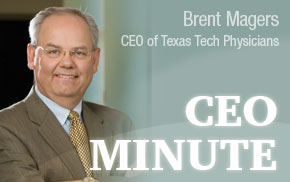
If you are interested in “gee-whiz” type numbers, consider this one: Medicare and its beneficiaries spent $103 billion on pharmaceuticals in 2013. We often hear the term billion and it loses some of its effect on us, but remember a million seconds is 12 days, while a billion seconds is 31 years. The often cited quote, supposedly said by the late Illinois senator Everett Dirksen comes to mind, “A billion here, a billion there, pretty soon, you're talking real money.”
There is no question the Centers for Medicare and Medicaid Services (CMS) is talking real money and therefore its recently released data on prescription drug usage is very interesting. The data show the cost and frequency of a variety of medications. I have reproduced a table at the end of this article from the CMS website ranking 2013’s top 10 drugs by the amount spent on them by consumers.
Remember hearing about the “little purple pill?” Well, that is Nexium, and it is used to treat heartburn, acid reflux and related stomach ailments. It’s number one in total spending. Advair, which is used to prevent asthma attacks as well as to prevent flare-ups or worsening of chronic obstructive pulmonary disease associated with chronic bronchitis and emphysema, is ranked at number two.
When I teach classes to medical, pharmacy and business students on health care economics and business, they often have many questions regarding the pricing of pharmaceuticals. Many learners have asked me why are drugs are so expensive? There are several reasons and it is a complex discussion. For one, the pharmaceutical industry is the field from which most of the recent advances in medicine have come. Furthermore, pharmaceutical companies spend billions on research and development and not all drugs are “winners.” This means pharmaceutical companies must profit enough from the successful drugs to offset the billions lost on the failures. Still, it is concerning that American patients pay the highest prices in the world for a variety of prescription drugs. In fact, in my opinion, the U.S. government and its citizens are paying for the majority of the drug development for the world.
The federal government’s database tracked 3,450 different drugs prescribed by a million doctors, nurse practitioners, dentists and other providers. The data is a rich resource for those interested in both clinical and business research, as well as providers. Some of these rankings will likely surprise and interest you. If this is of interest to you—read more on the CMS website. Have a great week!
Top Ten Drugs by Cost, 2013
|
Drug Name
|
Total Spent on Drug
|
Beneficiary Count
|
Prescriber Count
|
Total Claim Count
|
|
Nexium
|
$2,526,306,069
|
1,484,011
|
294,246
|
8,192,362
|
|
Advair Diskus
|
$2,262,995,221
|
1,527,217
|
288,140
|
6,605,423
|
|
Crestor
|
$2,216,193,162
|
1,732,787
|
262,938
|
9,066,409
|
|
Abilify
|
$2,107,091,535
|
396,764
|
127,070
|
2,886,837
|
|
Cymbalta
|
$1,961,132,000
|
1,032,774
|
266,510
|
6,887,543
|
|
Spiriva
|
$1,958,581,193
|
1,181,599
|
247,099
|
5,735,127
|
|
Namenda
|
$1,564,775,426
|
798,714
|
176,825
|
6,878,399
|
|
Januvia
|
$1,460,522,984
|
761,776
|
186,130
|
4,358,783
|
|
Lantus Solostar
|
$1,371,996,461
|
862,887
|
212,687
|
3,863,847
|
|
Revlimid
|
$1,349,964,592
|
24,637
|
8,888
|
153,782
|
